




































By Bruce Houlder, Founder, Fighting Knife Crime London
FKCL has had an exciting few months and has now increased its visibility in every month of operation over the last four years. Recently the Met agreed to place our signposting posters in every custody suite in London, and custody officers have all now been told to give effect to this instruction. A successful poster campaign in London, donated by a major adverting agency, has raised the profile of our work even more. We are working ever more closely with partners and others who share our understanding of
the need to make information available for all those who care for young people. We are in regular communication with the Home Office, and as we have promised, we will continue to hold the Government and the Coalition to tackle knife crime to account. We encourage members of the Coalition to write for us. Faron Paul does so this edition.
We see some useful evidence that the Home Office are serious about a changed approach, using longerterm thinking and public health-based approaches to tackling these issues.
We can't afford to let them off the hook. FKCL has been told that the Home Office are considering a much more national approach to broadbased information resources such as FKCL already provides for London. This is long overdue. A heightened level of engagement of all communities is vital and can best be achieved through collaborations of this kind. FKCL receives no public funding for the work it does. If this could only change, how much more could we achieve across the country. Getting young people engaged in activities and support groups that match their needs and talents is the best way to change lives. We know it works.
A long-term approach to youth policy is very much at the heart of the contributions in this edition. Our magazine continues to receive praise for the wide range of expertise and imagination it brings to the field of youth empowerment, and in combating youth violence. We know how important communication and collaborative effort can effect real change. Fighting Knife Crime London’s task is, in part, to seek to amplify the voices calling for effective change, to support the work they do, to champion action over rhetoric, and make a noise when new ideas need to be heard. We feel at last that some real change may be in the wind . By subscribing to our free magazine and spreading the messages we publish, and by using our resources you can help to save young lives and change them for the better.
Our contributors have always tackled the issue from multiple perspectives, providing valuable discussions on the causes, consequences, and potential solutions to knife crime, and for young people generally. Their work serves as a call to action for policymakers, law enforcement, educators, and the community at large. One such call for action is our first article this month.
So what does this edition have in store?
First, Prof. Stan Gilmour re-emphasises something FKCL has long tried to champion. He references the costbenefit of prevention . He stresses again how much we could all save could save if government acted on the advice and the evidence they have. We now need an accelerated approach to a cost saving approach from the Home Office, even if a little more needs to be spent up front to kick this off. On a similar theme, what better expert better could we have writing for us than Dr. Peter Neyroud who highlights the value of diversion practices for young offenders? All this, we now know, will be likely to save money and makes us all safer. He highlights to importance of the interim report, and the forthcoming Gauke review of sentencing which commends “policy based on the evidence of what is likely to be most effective in reducing crime and reducing re-offending.”
On a directly practical level Andrew Pritchard of AP Foundation (one of FKCL’s partners) discusses an exciting new 'Who’s Next' campaign . FKCL is also grateful to James Davis who has done a huge amount to the research work on this exciting new positive
and structured set of ideas for action. We were delighted to work with him and to be able to offer some advice along the way. Joel Dunn (CEO of the Paradigm Project) presents a longterm approac h to combatting knife crime calling for the reimagining of our funding models, policy frameworks, and intervention strategies to focus on the root causes of disadvantage.
Next, we have the extraordinarily inspiring Faron Paul, founder of Fazamnesty , who shares his wellestablished record for reducing violence at street level, and Sammy Odoi, a fellow trustee of FKCL writes about the impactful work of Wipers Youth CIC
Paul Jarvis KC brings considerable experience and provides much-needed clarity on legal perspective on county lines and gang-related crime . This is a subject that FKCL will return to in July with a piece from the Met's lead on child exploitation and county lines.
Caleb Johnson, Head of Change for the Youth Endowment Fund explores new youth sector research and initiatives . YEF offers so much added value to everything they contribute to our sector, so it’s a privilege to have them write for us again. Dr Ron Dodzro and Winston Goode from Juvenis offer a compelling, expert vision highlighting Dr Ron's ' Life of a Top Boy ', examining lived experiences and their broader implications.
Lastly, a former senior circuit judge, His Hon Nic Madge , with support from other leading experts, examines the merits of round-tipped knives and potential legal reforms to prevent violence. It is understood that this is something that the Home Office are looking at. FKCL consider this is not
so daunting as it seems, and there may well be surprisingly wide public support for control of all sharp pointed knives, if the arguments are sensibly made and approached through careful and practical reforms.
Together, through awareness, action, and collaboration, we will fight knife crime and create safer communities for all. We trust in our government to look for long term solutions. Soundbites cut no ice; longterm thinking and acting on evidence save lives.
Bruce Houlder Founder of Fighting Knife Crime London (FKCL)


By Professor Stan Gilmour KPM FRSA, Oxon Advisory
The politics of crime prevention presents a stark paradox: whilst some nations successfully reduce prison populations through research-informed policies, others remain trapped in cycles of punitive populism. The Netherlands and the UK offer contrasting case studies in how narrative shapes policy - and ultimately, outcomes. This is particularly evident in the approach to knife crime, where divergent policy responses have led to markedly different results.
1. The narrative battle: Preventive justice vs retributive populism
The tension between preventive and retributive approaches reveals a fundamental clash in how justice is narrated and understood:
In the UK, knife crime serves as a powerful rhetorical device, a shorthand for broader social anxieties. Many politicians and media outlets frame the issue through a lens of moral panic,
emphasising immediate threats over systemic causes. This framing demands visible action, typically in the form of increased stop-and-search powers and harsher sentences, regardless of effectiveness. The narrative often focuses on individual incidents of knife violence, which drive policy responses that prioritise enforcement over prevention.
The allure of retributive justice lies partly in its narrative simplicity. It offers clear villains, decisive action, and the satisfaction of punishment. Politicians can point to longer sentences for knife possession and increased police powers as tangible proof they're "doing something" about crime. This approach aligns with tabloid narratives of crime and punishment, where complex social issues are reduced to morality tales of good versus evil.
Preventive justice, by contrast, struggles for political oxygen. Its narratives are inherently more
complex, its successes less visible, and its timeframes extend beyond electoral cycles. When knife crime is prevented through youth work, education, or community intervention, there is no headline, no photo opportunity, no clear moment of resolution. The political challenge of selling prevention is compounded by the need to justify spending on social programmes that may take years to show results.
The funding disparity between these approaches is telling. While millions flow into policing and enforcement measures around knife crime, preventive programmes face constant scrutiny and budget cuts. Youth services, mental health support, and community programmes, all proven to reduce weapon carrying, must repeatedly justify their existence, while spending on reactive measures faces little questioning.
The Dutch approach offers an instructive contrast, emerging not from grand policy vision but from a pragmatic recognition of changing crime patterns and a cultural aversion to harsh punishment. Their success in reducing violent crime, including knife offences, stems partly from resisting the pull of punitive populism. Dutch political discourse maintains space for prevention alongside punishment, allowing policies to follow research and trendlines rather than headlines.
2. Political framing and the boundaries of policy possibility
The relationship between political framing and criminal justice policy reveals how discourse shapes the boundaries of what's politically possible:
Political framing operates on multiple levels simultaneously. At the surface, it shapes public debate through rhetoric and media coverage. More fundamentally, it determines which policy options can even be considered legitimate. This dynamic creates what criminologists call the "policy possibility space" - the range of approaches that can be seriously discussed without political annihilation.
In Britain, this space has progressively narrowed. Politicians across the spectrum find themselves trapped in a punitive arms race, each trying to appear tougher than their opponents. This "tough on crime" posturing creates a ratchet effect in policymaking: measures can be made more punitive but rarely less so, regardless of research findings about effectiveness. The political cost of appearing "soft on crime" effectively excludes many research-informed alternatives from consideration.

The Netherlands offers an instructive contrast in how historical experience shapes political possibilities. Their cultural memory of authoritarian control during WWII created an enduring scepticism toward harsh state punishment. This institutional memory manifests in concrete ways: from judicial training that emphasises proportionality to media coverage that regularly questions the value of incarceration.
This different framing allows Dutch politicians to advocate for more nuanced approaches without facing the same political penalties as their British counterparts. When Dutch judges favour community service over imprisonment for minor offences, they're working within a political framework that values rehabilitation over retribution.
Political framing creates self-reinforcing cycles in policy implementation. When British politicians frame crime primarily as a failure of punishment, they naturally gravitate toward solutions involving more punishment. This framing then shapes how policies are implemented: police focus on enforcement rather than prevention, courts emphasise deterrence over rehabilitation, and resources flow accordingly.
The same dynamic works in reverse. Dutch framing of crime as a public health issue leads to different implementation priorities: more resources for prevention, greater emphasis on rehabilitation, and more attention to social factors. These implementation choices then generate different outcomes, which in turn reinforce the original framing.
However, even the Dutch model faces growing challenges from populist pressures. Recent years have seen some Dutch politicians adopting more punitive rhetoric, particularly around issues like organised crime and youth violence. This shift highlights how the durability of research-informed approaches depends on actively maintaining supportive political narratives against populist simplification.
The rise of social media has intensified these pressures. The platform economy rewards emotional engagement over nuanced analysis, making it harder to maintain complex narratives about crime and justice. Individual incidents can quickly become nationwide moral panics, pushing politicians toward reactive policies regardless of research evidence.
Breaking out of punitive cycles requires understanding how political framing constrains policy choices. Reform efforts need to address not just sp ecific policies but the broader narratives that make those policies possible. This might involve:
• Developing new ways to frame success in criminal justice that don't depend on punishment metrics
• Creating institutional buffers between criminal justice policy and short-term political pressures
• Building broader coalitions that can maintain support for research-informed approaches even during moral panics
• Finding ways to make prevention's successes more visible and politically salient
The challenge isn't just implementing better policies but creating and maintaining the political space that makes better policies possible.
The practice of "othering” - treating certain communities as fundamentally different or threatening - undermines effective crime prevention in multiple ways:

In many cities, this manifests through linguistic devices that paint entire demographics as risks to be managed. Terms like "these people" and "those communities" create artificial divisions between "dangerous" and "respectable" society. This framing justifies discriminatory practices like stop-and-search, which create self-fulfilling prophecies through targeted surveillance and enforcement.
The Netherlands' relative success partly stems from treating crime as a public health issue rather than a moral failing. This framing enables more nuanced responses, focusing on prevention and rehabilitation rather than punishment and containment. However, even this approach faces challenges from rising populist rhetoric that threatens to reintroduce more divisive narratives.
The challenge of implementing effective prevention strategies reveals a fundamental tension in crime policy:
Prevention programmes typically deliver results over years or decades, while political careers operate on much shorter timelines. When Home Secretaries serve average terms of two years, long-term thinking becomes politically costly. The visible action of enforcement delivers immediate political dividends; the patient work of prevention does not.
The Netherlands' experience offers insight into managing this tension. Their success stems not from eliminating political pressures for quick results, but from creating institutional and cultural frameworks that enable longer-term approaches to coexist with short-term political imperatives.
The relationship between cultural attitudes and policy choices emerges as both barrier and opportunity:
The Dutch case demonstrates how cultural attitudes, shaped by historical experience and reinforced by institutional practices, can create space for research-informed reforms. Their cultural scepticism toward harsh punishment provides political cover for more rehabilitative approaches, even in cases involving weapon possession and youth violence.
The UK's experience shows how cultural attitudes can also entrench ineffective policies. The media's role in amplifying fear and moral panic around knife crime creates a cultural environment where research-informed policies face significant resistance. The portrayal of knife crime as an epidemic requiring emergency response
often drowns out evidence about effective prevention strategies.
The evolution of youth justice systems reveals another stark contrast in how societies balance punishment with protection. Whilst some jurisdictions embrace child-first approaches that prioritise rights and development, others remain wedded to mini-adult models that perpetuate cycles of harm.
The rights-regarding paradox in youth justice manifests most clearly in how systems process children who offend. Traditional approaches, still prevalent in much of British political discourse, treat young offenders primarily as wrongdoers who require punishment, with rehabilitation as a secondary concern. This framing persists despite overwhelming evidence that punitive responses often entrench criminal behaviours rather than preventing them.
Child-first jurisdictions, exemplified by New Zealand's youth justice reforms and Scotland's Children's Hearing System, operate from fundamentally different premises. These systems begin by recognising children as rights-holders whose development and welfare must be prioritised, even (perhaps especially) when they transgress. This reframing shifts the focus from punishment to addressing underlying needs and strengthening protective factors.
The contrast appears most starkly in how each approach handles children's participation in justice processes. Traditional systems often exclude or marginalise children's voices, treating them as objects of intervention rather than subjects with rights. Child-first

Scotland's Children's Hearing System stands as a distinctive model of preventive justice. At its heart lies an ambitious endeavour to intervene before matters spiral towards crisis, whilst maintaining rigorous respect for children's rights and family dynamics. The system's inquisitorial nature, deliberately steering away from confrontational legal proceedings, reflects a sophisticated understanding that early intervention demands cooperation rather than conflict. Most striking is its insistence on trauma-informed practices and developmental appropriateness, suggesting that prevention is not merely about averting future offending but about fostering resilient young lives.
approaches, conversely, build meaningful participation into every stage, from initial contact through to rehabilitation planning.
Yet implementing child-first approaches faces significant political headwinds. Media narratives about "feral youth" and "teenage thugs" create pressure for punitive responses, regardless of evidence about their ineffectiveness. Politicians find themselves trapped between research showing what works and public demand for visible punishment.
The economic argument for child-first approaches proves compelling but often struggles for political traction. While prevention-focused systems show better outcomes at lower costs - New Zealand's reforms led to a 70% reduction in youth custody within five years - the investment horizons extend beyond electoral cycles. The political challenge lies not in proving effectiveness but in maintaining support
for long-term approaches against shortterm pressures.
The rights-regarding future of youth justice depends largely on how successfully reformers can reframe public discourse. Success stories from child-first jurisdictions demonstrate that public safety and children's rights need not conflict - indeed, protecting rights often enhances safety more effectively than punishment. However, maintaining this understanding requires constant work to counter simplistic narratives that pit rights against responsibility.
Institutional architecture plays a crucial role in sustaining child-first approaches. Systems that separate youth justice from adult criminal justice, like Scotland's Children's Hearings, prove more resilient to punitive pressures. Similarly, embedding children's rights in statutory frameworks provides crucial protection against policy shifts driven by moral panics.
The challenge moving forward isn't just implementing better policies but creating and maintaining political space for approaches that prioritise rights and development. This requires:
• Developing new narratives about youth justice that emphasise prevention without appearing soft on crime
• Building institutional frameworks that can protect child-first approaches from political pressures
• Creating metrics that capture longterm outcomes rather than just immediate compliance
• Maintaining public support through transparent demonstration of effectiveness
The experience of successful reformers suggests that transitions to child-first approaches, once established, can create
self-reinforcing positive cycles. Lower reoffending rates build public confidence, which enables further reforms, leading to better outcomes still. However, initiating this cycle requires sustained political will to weather initial scepticism and resist punitive impulses.
It's not all doom-and-gloom, the devolved administrations of Scotland and Wales have led the way and carved distinctive paths in enshrining children's rights and future generations' interests into law, marking a notable departure from Westminster's more tentative approach to preventive justice. Scotland's incorporation of the UN Convention on the Rights of the Child (UNCRC) into domestic law, despite initial constitutional challenges, represents a bold commitment to children's rights, dovetailing with its welfare-oriented Children's Hearing System. Wales, meanwhile, has pioneered groundbreaking legislation through its Well-being of Future Generations Act 2015, requiring public bodies to consider long-term impacts of their decisions, whilst its Rights of Children and Young Persons (Wales) Measure 2011 made it the first UK nation to embed the UNCRC in domestic law. These legislative frameworks reflect a more expansive view of preventive justice, extending beyond immediate crime prevention to encompass broader social and environmental sustainability. Such approaches stand in marked contrast to England's more reactive stance, suggesting that devolved administrations are more willing to experiment with radical, rightsbased approaches to social policy. This divergence has particular significance for youth justice, where Scottish and Welsh frameworks increasingly emphasise prevention through rights protection and future-oriented policymaking, rather than traditional criminal justice interventions.
The broader rights-regarding future of youth justice ultimately depends on our ability to maintain what criminologists term the "developmental perspective", understanding young offenders primarily as children in development rather than criminals in training. Until we consistently frame responses to youth crime through this lens, we risk continuing cycles of ineffective intervention that neither protect public safety nor support healthy development.
The comparison of these approaches suggests several key lessons for reforming justice:
First, changing narratives about crime and punishment must precede or accompany policy change. Success stems not just from different policies but from different ways of understanding and discussing crime. This is particularly evident in approaches to knife crime, where media narratives and political discourse shape the range of possible responses.
Second, prevention programmes need institutional protection from short-term political pressures. This might involve creating independent bodies with secure funding, similar to public health institutions. For issues like knife crime, this could mean further ring-fenced funding for youth services and community intervention programmes.
Third, addressing "othering" requires more than policy change - it demands fundamental shifts in how we discuss and conceptualise crime and punishment. The tendency to stereotype young people from certain communities as potential knife carriers creates self-fulfilling prophecies through discriminatory enforcement practices.
The real challenge lies not in choosing between competing approaches but in
creating political and cultural space for evidence-based reforms. Until we address how fear-based narratives around knife crime undermine effective prevention, we risk remaining trapped in cycles of ineffective but politically expedient responses to crime.
The success of reform efforts ultimately depends on our ability to align political incentives with evidence-based approaches - a task that requires changing not just policies but the narratives that make those policies possible.
"The true measure of a justice system lies not in how many crimes it punishes, but in how many it prevents. Every punitive response represents, in some way, a previous failure of prevention. We must ask ourselves: are we investing in failure, or investing in prevention?"




By Dr Peter Neyroud, CBE QPM CCMI, Institute of Criminology, University of Cambridge
Introduction:
The recent interim report "Independent Sentencing Review: History and trends in sentencing1”chaired by David Gauke commends “policy based on the evidence of what is likely to be most effective in reducing crime and reducing reoffending” (p.8). That review was focused on what happens once offenders have been found guilty by a court. However, we now have more than a decade of field research into deferred prosecution in England and Wales. One way to support Gauke’s mission of reducing unnecessary overuse of imprisonment is to reduce the number of offenders entering the formal criminal justice system by using effective alternatives.
Uniquely, in criminal justice, we have three large scale field experiments
to draw on, alongside a wider body of research on cautions with conditions. Overall, the research suggests that a deferred prosecution with conditions may reduce harm at a reduced cost compared to prosecution and may be particularly effective for younger offenders committing offences involving violence.
The deferred prosecution model was originally tested in Birmingham in “Operation Turning Point” between 2011 and 2014. The trial was originally called “Damocles” after the story about the Syracuse tyrant, Dionysius, suspending a sword over the head of a courtier as a threat. The threat being offered in the Birmingham trial was that of being prosecuted unless the offender complied with an
agreed contract, which included good behaviour and a range of treatments. These were intended to be tailored to the offender and their offending.
During the development of the trial, the officers involved opted to rename it “Turning Point” after the research conducted by Rob Sampson and John Laub on the way that offenders can be encouraged to desist from offending by key turning points in their life –relationships and employment were examples offered but arrest has also been labelled as a “teachable moment”.
The Birmingham trial involved more than 400 offenders of all ages whom the police had determined to meet the criteria – evidence and public interest – for prosecution. They were all triaged for prior record and seriousness of the offence to ensure that only low harm offenders were included. Finally, they were randomly assigned between court prosecution and Operation Turning Point. The second group were asked to attend a face-to-face meeting with a police offender manager within 48 hours, at which they were encouraged to agree a contract. This could include, amongst others, commitment to restorative justice with their victim, requirements not to contact the victim, alcohol or drugs treatment, mental health support or unpaid work.
As the trial progressed it became clear that police offender managers needed more training and support to set effective conditions. The programme team provided a combination of training and feedback with the provision of a simple online prescribing tool to support them saw the consistency of the conditions improve.
One objection to police led diversion
advanced has often been that police officers would not support the model, seeing it as “going soft” compared to charging and bailing an offender. As the Turning Point developed it became apparent that something quite different was taking place. We conducted careful research with the police officers involved 2 and their responses suggested that Turning Point was, instead, viewed as a serious attempt to change offending outcomes.
As one custody officer put it:
“Custody Officers particularly older Custody Officers such as myself are generally regarded as probably being the most cynical bunch of Police Officers that you will ever come across, and the most difficult to convince that radical change is every going to be a good thing. But very very few Custody Officers failed to see the potential benefits of Turning Point”
There was also a vigorous debate in the programme board about how victims felt about the trial. The programme team set about surveying victims on both sides of the trial, those whose offenders had been prosecuted and those who had been diverted to Turning Point. Contact with an early sample of victims in the pilot phases suggested that officers were not consistent in explaining the diversion, its purpose and emerging outcomes. As the trial progressed a more structured process was put in place, based on procedural justice. The subsequent detailed victims’ survey showed that
victims were generally more confident in Turning Point than they were with the court process.
The results of the first, Birmingham trial, suggested that deferred prosecution was effective with offenders who had committed violent crimes, but not so effective in crimes without a personal victim. A second trial, in Durham, Operation Checkpoint, used a similar model of deferred prosecution but used trained ‘navigators’ rather than police offender managers to set and manage the treatments. Dr John Cooper’s evaluation of Checkpoint included a very detailed cost benefit comparing Checkpoint with court processing. Cooper concluded that, even if we assume that deferred prosecution outcomes are no better than court, its cost benefit was around three times higher than court. The final outcomes for the larger London Turning Point trial will be available soon.
The three experiments did not explicitly include knife possession as one of the included crimes, so it is not yet possible to state confidently that deferred prosecution is “likely to be effective” in Gauke’s terms. However, it seems likely given the impact on offenders with violent offences that this is a path worth pursuing as a part of a wider strategy to reduce violence. The key elements for effective deferred prosecution are three: triaging the right group of offenders into the programme; setting realistic and welldesigned conditions tailored to the offender and the offence; tracking the offender’s compliance and the effectiveness of the treatments.
There are reforms to cautioning and pre-court diversion that have been
sat on the Ministerial cutting table for a ridiculously long time. It was 2014 when the then Secretary of State for Justice kicked off a consultation about a new “two tier” system of diversion. More than a decade later, Ministers have inherited an untested and yet to be implemented new system – community and diversionary cautions – and need to make some decisions. The time has come for some decisions and a clear template for a reformed pre-court approach, based on the best evidence and targeted at acute problems like knife crime.
Dr Peter Neyroud, CBE QPM CCMI, Associate Professor in Evidence-based Policing, Jerry Lee Centre for Experimental Criminology, Institute of Criminology, University of Cambridge, Steering member of Campbell Collaboration (Crime and Justice), Advisor to HM Government on Reducing Violence, Honorary Professor, Teesside University, Visiting Professor, Huddersfield University, and Fellow of Wolfson College, Cambridge

Further Reading
[1] https://assets.publishing.service.gov.uk/ media/67c583a868a61757838d2196/independentsentencing-review-part-1-report.pdf
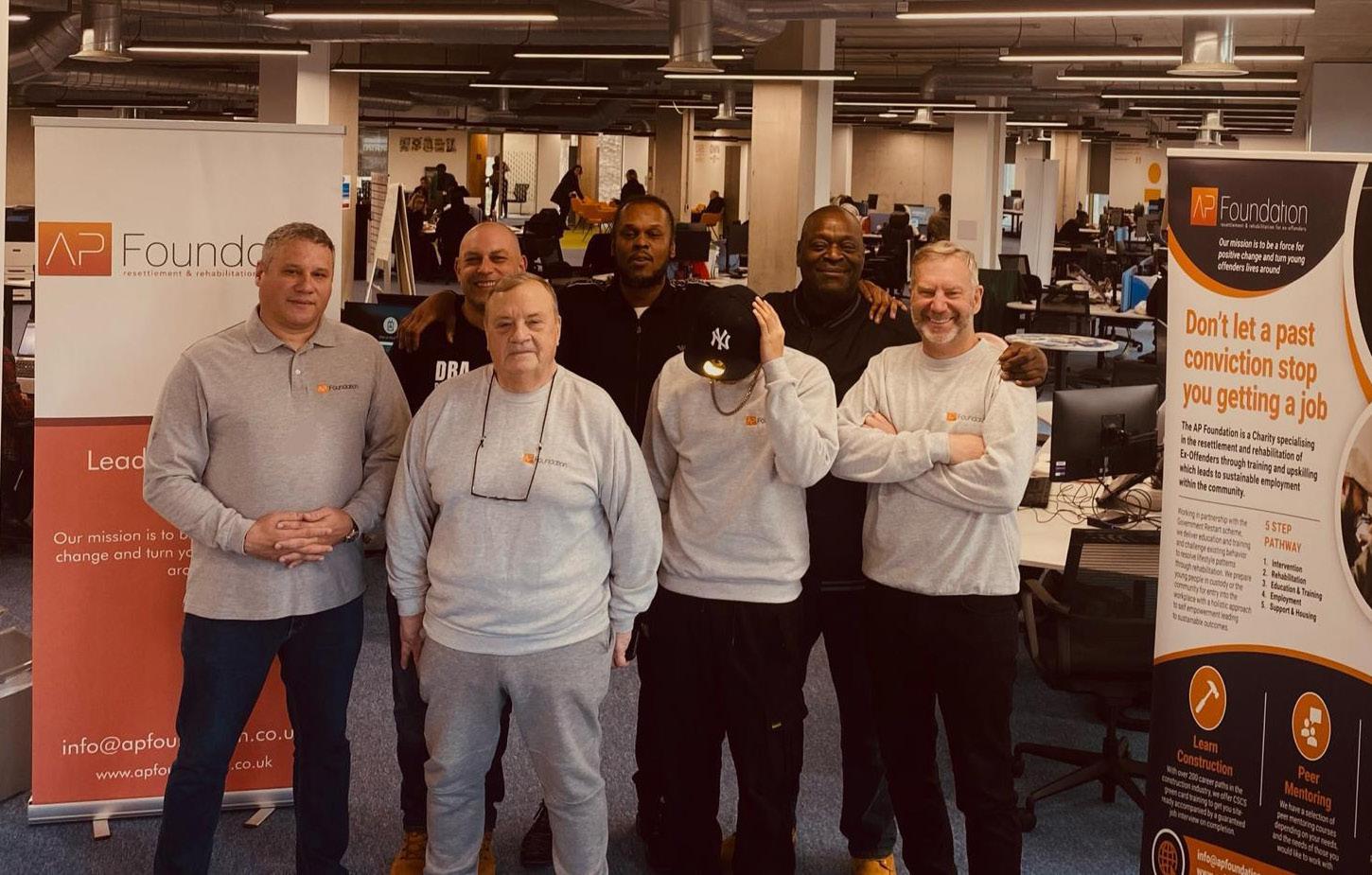
By Andrew Pritchard, Founder and CEO, AP Foundation
2025 has picked up where 2024 left off: worsening youth knife crime continues to plague London’s streets. Our communities are in a precarious position where if a change of approach isn’t identified, tested and trialled, then this situation will likely deteriorate for us all.
Many of the people reading this article will be on the frontlines working closely with young people and their local communities or are supporting those who do. However, it remains an uphill struggle for everyone involved. To help, the Who’s Next? Campaign coalition has just published our action plan that we hope can become a catalyst for delivering meaningful change in 2025 – leading from the
frontlines during a localised pilot with a series of coordinated, communitydriven solutions.
For many years, local authorities, the Metropolitan Police, charities, and community-oriented organisations, such as youth support services, have worked tirelessly to develop and deliver early intervention and diversion activities that have a lasting impact. Many of these projects are powered by the Mayor of London’s Violence Reduction Unit (VRU).
Published in mid-March, the Who’s Next? campaign's ‘ Tackling Youth Knife Crime Together: Community Action Plan ’ will build on this great work –
by consolidating local support services and increasing the sustainability of community resources – while staying aligned with many of the invaluable insights found within the Youth Endowment Fund’s Toolkit.
To better understand how this could look, it was essential that communities directly impacted by such changes – impacted personally and/ or professionally – were engaged with and heard. That is why for the past six months we have reached out and listened to the views of people who see the daily devastation it causes: victims, their families, perpetrators, ex-gang members, educators, youth and social workers, police Safer Neighbourhoods Teams, integrated gang units, NHS staff, and members of the criminal justice system.
Their collective insights helped us to build a Pilot Proposal comprising a series of innovative communitydriven solutions – created by London’s communities for the benefit of its communities – that we propose can make a significant impact to tackling youth knife crime when actioned during a localised pilot in Hackney, at the centre of our community, over a two-year period. Delivered through a collaborative framework; powered by a cross-sector, localised network of frontline community stakeholders:
• There is a lot of incredible work being done behind the scenes to help combat youth violence and knife crime by addressing their root causes. However, by working in isolation, the potential of these essential prevention and
intervention methods is restricted due to challenges with funding, resources, and coordination. Charities compete for the same, limited, funding pots, but there must be more incentives to work together, as well as guidance published on collaboration and collective goals.
We have implemented a framework that creates local networks, uniting like-minded charities and youth support service providers, to produce coordinated projects. Our coalition has come together to amplify our impact – through expanded outreach, personnel, cooperation, and communication. We have developed programmes and infrastructure on how to support one another across the same local communities, for the duration of a pilot programme.
• To create a supplementary educational programme between local youth support work charities and educators, offering a range of ‘real-world skills’ to students. This will be supplementary to the traditional academic curriculum at schools, colleges, pupil referral units, and youth offender institutions. The training will be opportunity- and awareness focused, helping students to navigate life with ‘real-world skills’, such as building financial acumen, embracing creativity and culture, cultivating key people skills, learning key legal rights (with police), and avoiding gang exploitation.
The programmes we will deliver are tailored to the audience’s age demographic, so not to
inadvertently induce fear and be irrelevant to young people’s current needs. It will be led by personnel who children can relate to from their local area, who understand community dynamics and the challenges of that environment –teaching through fun, interactive role-playing scenarios from relatable, lived experiences.
• To offer professionalised training in gang grooming and county lines exploitation to more public services’ outreach personnel and parents. Our partners want to target more frontline public sector services to help them better identify youth at high risk of violence, drug exploitation, and gang grooming. Currently, there is a lack of standardised training available for GPs, nurses, social workers, police and educators across these areas.
There are many cases across London where parents have been unable to seek help once they have learned their child has entered gang life, due to a lack of recognised support channels. Parents would benefit from regular opportunities to discuss one-on-one with trained professionals the dangers associated with gang affiliation, drug dealing, and carrying weapons – as well as ways to spot if their child has joined a gang and how to get support if this happens.
• Youth centres continue to close at an alarming rate as local authorities do not have the funds to support them. But evidence shows the work they facilitate offers significant value.
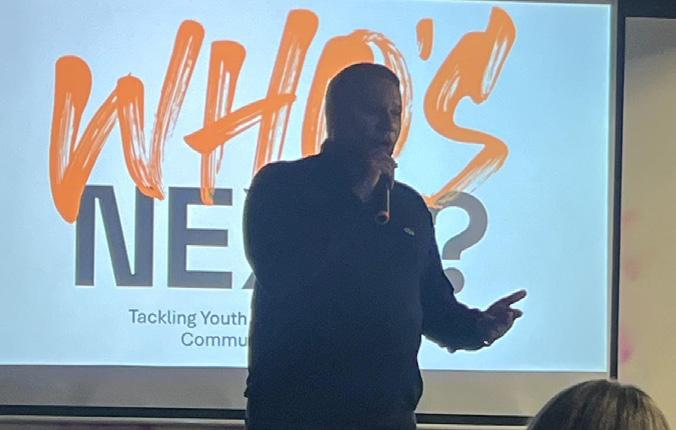
Research by UK Youth and Frontier Economics found that for every £1 government invests in youth work, the benefit to the taxpayer is between £3.20-£6.40. We will offer local community hubs and youth centres guidance and tools for their operations to become more self-sufficient – so they aren’t solely reliant on funding from local authorities and complex government tenders.
We will create this guidance with campaign partners who have succeeded in this area, to help increase commercial awareness. Over the first 24 months of being in operation, guidance would show how to better use features, resources, and even local youths’ entrepreneurial skills and services nurtured at the hubs – with a focus on how to maximise commercial opportunities via local partnerships, sponsorship, fundraising, and advertising – using revenues to help make services more affordable for local youth.
• There has been a progressive breakdown of trust and cooperation between local police and community members, so we aim to create collaborative, outcome-focused Community Awareness & Action Groups (CAAGs). Currently, in some

boroughs, police attendance at quarterly community Ward Panel meetings isn’t unheard of. However, to help incentivise local communities to better communicate with their local police, they must see them much more often in productive contexts –sharing common goals to make their local environment a better place with collective accountability.
Meeting monthly, these online meetings would comprise a handful of nominated key community representatives, Safer Neighbourhoods’ police sergeants, and local council officials to share regular progress updates on pre-determined goals. These goals would be established and held accountable during quarterly ‘open door’ community feedback in-person sessions. After initial benchmarked metrics have been established, the CAAG would create meaningful dialogue about genuine community perceptions of police, highlight concerns (and praise) surrounding changing neighbourhood dynamics, as well as offering measured advice on where the police can better integrate with productive community events – as per the UK Government’s Safer Streets aims.
By no means is our model the entire approach needed, but we have used our diverse network’s combined vast experience and insight to outline additional measures to those already in place, that we strongly believe can drive meaningful change in 2025 – acquiring funding collectively under shared goals through partnerships with both the public and private sectors.
The devastation wrought by knife violence across our communities demands collective action – to build on and unite the existing hard work being done. Its root causes and impact will not simply fade away – and neither will we –so please join us with your support.
Andrew Pritchard Founder and CEO of AP Foundation

www.apfoundation.org.uk















Cornerstone VR is an award-winning, virtual reality -based learning and intervention tool which allows users to ‘walk in th e shoes’ of children and young people. This immersive approach builds em pathy, strengthens relationships, and creates positive cha nge.
Cornerstone VR’s films are creating a powerful, interactive way to educate, engage, and equip young people and the adults around them with the tools to promote safer decisions. -Head of Enfield Youth Justice Service

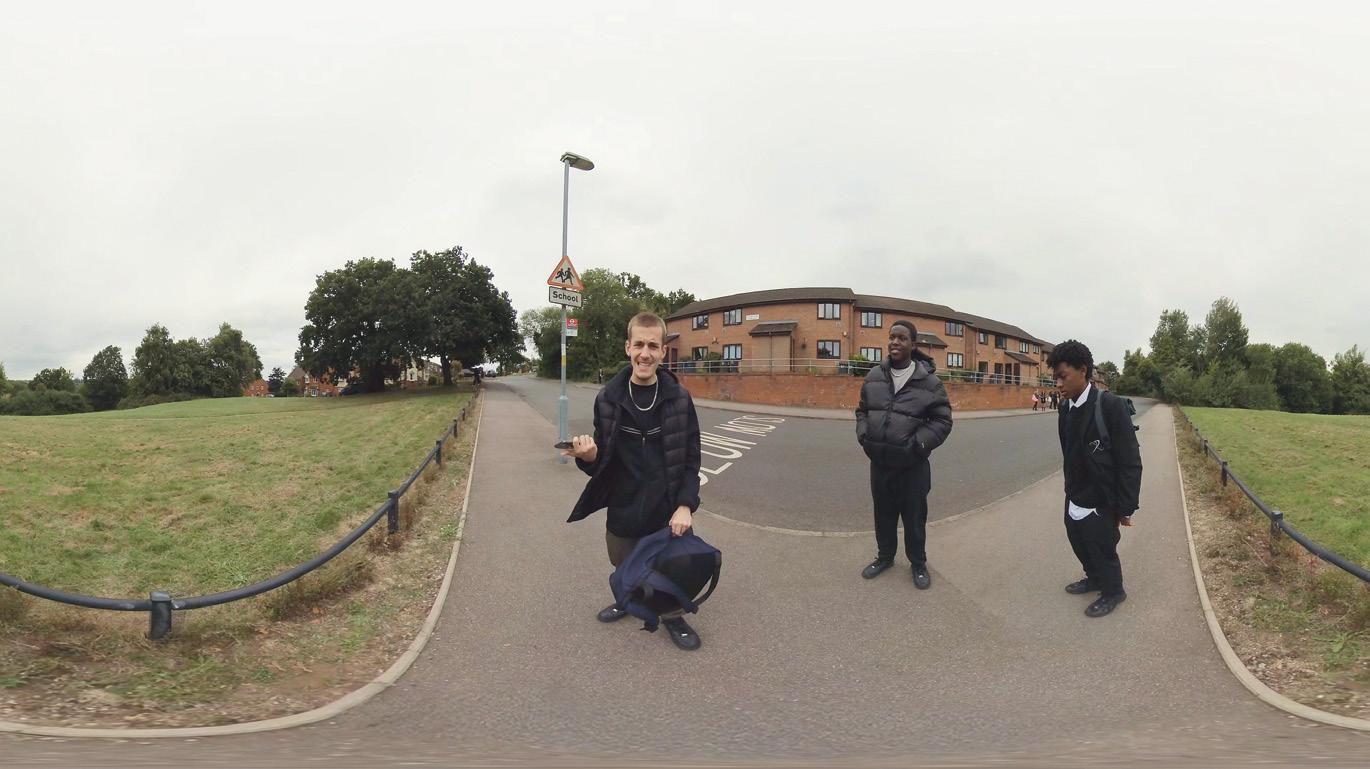
Created in partnership with Thurrock Council, Enfie experts across law enforcement, education, social w justice, and young people themselves, Cornerstone V unique series of VR films which address the motivat carrying knives and the devastating consequences th
This process has been so valuable in encouraging [young person] to recognise that his thoughts and opinions are important and able to enact positive change. -Youth Justice Social Worker www.cornerstonevr.co.uk
It felt very realistic and like I was actually there. -Young Person





By Joel Dunn, Founder and CEO, Paradigm Project
Knife crime continues to dominate headlines, fueled by narratives that often focus solely on reactive measures and isolated incidents. But if we are truly committed to reducing knife crime in London and beyond, we must acknowledge that it is not an isolated issue. Knife crime is a symptom of a broader, systemic failure that leaves some of our most disadvantaged children without the support they desperately need.
My work has long focused on exposing these systemic shortcomings and advocating for innovative, upstream interventions that address the root causes of violence. As the founder of Paradigm Project and through my ongoing research at the University of
Cambridge, I have seen first-hand how deeply intertwined factors such as poverty, racial bias, underinvestment, and a lack of holistic support contribute to the conditions in which knife crime flourishes.
For far too long, the public discourse around knife crime has been dominated by short-term, reactionary approaches. Politicians, media, and public perception tend to focus on immediate fixes like increased policing or stop-and-search measures without addressing the underlying systemic issues. This narrow focus not only misses the mark but also perpetuates a
cycle in which vulnerable young people are left to navigate environments that are hostile and neglectful.
Recent research has shown that disadvantaged children, particularly those from minoritised backgrounds and low socioeconomic households, are disproportionately affected by these systemic failures. For example, studies consistently reveal that Black youth and those living in deprived areas face significantly higher risks of exclusion from mainstream education and involvement in the criminal justice system. These outcomes are not random; they are the result of decades of underinvestment in early support systems and a failure to provide the comprehensive, long-term interventions that could change their trajectories.
Knife crime, for example, can be addressed through the context of the school-to-prison pipeline, a framework that exposes how early disadvantages and systemic neglect funnel vulnerable children into cycles of exclusion and, eventually, criminal justice involvement. When we discuss knife crime in isolation, we risk overlooking the fact that it is part of a broader spectrum of issues arising from long-term, systemic failures.
The cost-benefit data is staggering. Reactive approaches to youth violence and exclusion come with enormous social and economic costs. Research indicates that for every £1 invested in early intervention programmes, society can save between £2 and £4 in long-term costs. Yet, our current funding models remain fixated on short-term outcomes, with billions spent annually on crisis management
from child protection to youth justice interventions. This reactive expenditure not only drains public resources but also fails to prevent the very issues it seeks to address.
If we are serious about tackling knife crime, our approach must shift radically. We need to move beyond reactionary measures and invest in systemic, upstream change that addresses the complex interplay of factors contributing to youth violence. This means reimagining our funding models, policy frameworks, and intervention strategies to focus on the root causes of disadvantage.
Key to this shift is the recognition that knife crime is not simply a law enforcement issue, it is a public health, education, and social justice issue. It demands a holistic response that involves all stakeholders: schools, community organisations, policymakers, and families. In my work, I have drawn on the pioneering adaptation of Bronfenbrenner’s ecological systems theory by Dr. Jessie Stern ( www.drjessiestern.com ). Her model powerfully illustrates how the various layers of a child’s environment from the immediate microsystem of family and peers to the broader macrosystem of cultural and policy influences interact to shape their life trajectory. Importantly, Dr. Stern’s adaptation brings to light how systemic racism, economic deprivation, and underinvestment converge to marginalize certain groups, ultimately setting the stage for violent outcomes such as knife crime.
This adapted framework challenges us to look at youth violence as the product of multiple, interlocking
factors. It demands that our interventions are equally multifaceted aimed not only at mitigating immediate risks but also at transforming the environments that breed disadvantage. Only by addressing these systemic inequities can we hope to reduce knife crime in a meaningful, sustainable way.
The concept of “scaling deep” is critical to this discussion. It involves investing in deep, transformative work that begins in early childhood and continues throughout a young person’s developmental journey. Instead of waiting until a crisis occurs, when interventions are costly, less effective, and often too little, too late we must invest in early preventive measures.
For instance, comprehensive early intervention programmes that focus on enhancing socio-emotional
learning, mental health, and community support have demonstrated significant returns. When children receive robust support from the start, they are better equipped to handle adversity and less likely to be drawn into cycles of violence or exclusion later in life. This proactive approach is not only humane it makes economic sense. Cost-benefit analyses consistently show that early interventions yield substantial longterm savings by reducing the future burden on public services.
By scaling deep, we can transform the narrative around knife crime. Instead of treating it as an inevitable outcome of youth misbehaviour, we can reframe it as a preventable consequence of systemic failure. This shift requires rethinking how we measure success in our interventions. Traditional metrics focus on short-term outcomes, like immediate reductions in violence or exclusion. However, true progress must

be measured in terms of long-term life chances, academic success, mental well-being, and sustained community cohesion.
It is time to challenge the status quo. We must recognise that our current approach, one that relies heavily on reactive interventions, is insufficient and, indeed, unsustainable. The data are clear: continuing down this path will only perpetuate the cycle of disadvantage and violence that has long plagued our communities.
I have seen the transformative potential of early, holistic interventions. My research at Cambridge and my work with Paradigm Project are dedicated to uncovering and addressing the root causes of these systemic failures. The goal is not to undermine the critical work being done at crisis points; rather, it is to ensure that our overall strategy does not neglect the essential need for upstream, preventive measures. We need to reallocate resources and reframe our priorities. This means shifting funding away from solely reactive measures and investing in long-term, community-led strategies that empower our young people. It means creating a framework that is not rigidly tied to short-term outcomes, but one that values deep, sustainable change where every child, regardless of their background, has the opportunity to thrive.
I invite all stakeholders, practitioners, policymakers, community leaders, and funders to join me in this crucial endeavor. Let’s reject the false dichotomies that pit schools against
homes or short-term fixes against long-term solutions. Instead, we must embrace a comprehensive, systemsbased approach that tackles the multifaceted roots of knife crime and youth violence. Our children deserve a future unburdened by systemic inequities, and by investing in early, holistic interventions, we can dismantle the cycles of disadvantage that lead to violence.
Now is the time to act. Together, we have the opportunity to reshape our communities by reallocating resources, rethinking our priorities, and implementing transformative strategies that empower our young people. Let’s drive the systemic change our society so urgently needs.
Paradigm Project, Founder and CEO

paradigmproject.co.uk


By Faron Paul, Founder, Fazamnesty
At Fazamnesty, we are more than just an organisation—we are a movement. A movement made up of incredible people, all dedicated to the same goal: reducing knife crime and making our communities safer. From our amazing team and vast network of volunteers to the overwhelming support we receive from senior leaders, parents, carers, and young people, we are proof that when people come together with a shared purpose, real change happens.
“If we can prevent one young person losing their life or a needless prison sentence, then it’s all worth it.”
One of the most powerful things about Fazamnesty is the sheer number
of people who stand behind us. We are not alone in this fight—far from it. Across the UK, our dedicated volunteers give their time, energy, and passion to help us make a difference.
We have support from senior leaders, law enforcement, community activists, teachers, parents, and, most importantly, young people themselves. It is this collective effort that drives us forward every single day.
When a young person reaches out to us for guidance, when a parent thanks us for supporting their child, or when a community leader stands with us to take action, we are reminded of why we do this. Together, we are stronger, and together, we will continue to make a difference.

At Fazamnesty, we believe that prevention is better than cure. We don’t just talk about the issue—we go directly into communities to educate, support, and provide real alternatives for young people. Our work includes:
• Street Patrols – Engaging with young people, de-escalating conflicts, and building trust in communities.
• Weapons Collection – Offering a safe and anonymous way for individuals to dispose of weapons before they cause harm.
• School PID Programme –Educating young people on the real consequences of knife crime and helping them make better choices. We are proud to report that we
have received nothing but positive feedback on this programme, with both staff and students praising its effectiveness in raising awareness and sparking important conversations around knife crime.
• Project Transition – Providing 18-25-year-olds with courses, licences, and job opportunities to help them move towards a positive future.
Each of these initiatives is made possible because of the incredible team behind Fazamnesty. Every volunteer, every supporter, and every community member who stands with us is a vital part of the change we are creating.
Project Transition: A Pathway to Employment & Stability
Knife crime and violence are often linked to lack of opportunity.

Many young adults who have been caught in the cycle of crime struggle to see a way out, especially when they lack the qualifications or experience needed to find stable employment.
That’s why we launched Project Transition—a programme designed to support 18-25-year-olds by providing them with training, licences, and job opportunities. Through this initiative, we help young people get access to courses that lead to qualifications, whether it’s in construction, security, driving, or other skilled industries.
By giving young adults real opportunities, we help them break away from negative influences and build a stable, independent future. Earning a legal income, gaining new skills, and working towards long-term goals are some of the most effective ways to prevent reoffending and keep young people away from violence.
The Importance of Key Partners
Our work would not be possible without the support of key partners like Axon and Get Licences. Their contribution allows us to push forward with our mission, ensuring that we can continue providing opportunities, resources, and support to those who need it most.
With their help, we can equip young people with the qualifications and tools needed to change their lives, giving them a real chance at employment and a safer future. Partnerships like these are a crucial part of our success, and we are incredibly grateful for their ongoing commitment to the cause.
We are proud to be part of the government coalition against knife crime, ensuring that the voices of the community are heard at the highest levels. This is a major step forward. By working alongside policymakers and law enforcement, we are helping to shape strategies that focus on rehabilitation, prevention, and long-term solutions rather than just punishment.
We are also incredibly grateful for the unwavering support of organisations like DSYF (Don’t Stop Your Future) and other community groups who share our mission. This is a collective effort, and we are all in this together.


The amount of love, trust, and belief we receive from people across the country is overwhelming. We have seen first-hand how much parents, carers, teachers, and young people want change. The support we receive is a testament to the fact that this is an issue we can solve together.
We are not just an organisation—we are a family. A family that refuses to accept the loss of young lives to knife crime. A family that believes in hope, action, and change.
Knife crime is not just a policing issue—it is a community issue. And that means everyone has a role to play.
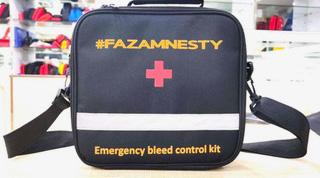
If you want to help, there are so many ways to get involved. Whether it’s volunteering, supporting our initiatives, or simply spreading awareness, every action makes a difference.
To find out more about how you can support Fazamnesty, visit www.fazamnesty.com.
“If we can prevent one young person losing their life or a needless prison sentence, then it’s all worth it.”
Together, we can create a future without knife crime. Together, we can save lives.
Thank you,

Faron Paul Founder, Fazamnesty

www.fazamnesty.com.






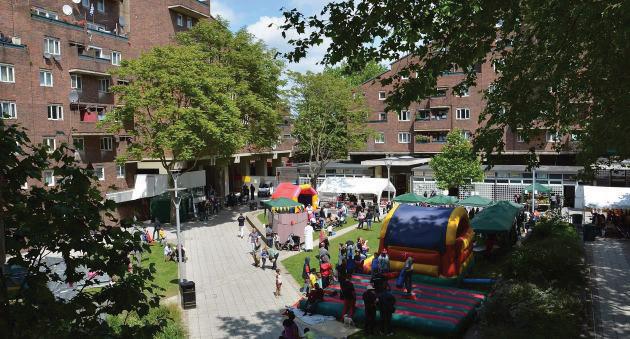













By Sammy Odoi, Managing Director, Wipers Youth CIC and a trustee of Fighting Knife Crime London
Countless pages have been written by academics and researchers seeking to find the magic formula of how society prevents people committing and/or returning to crime, especially acts of violence. While theories abound and papers continue to be published, those of us working on the frontline know that prevention is better than cure. This approach is gaining traction, with many more cities around the world adopting a public health approach (PHA) to tackling the root causes of violence.
An integral part of any PHA addressing serious violence that impacts young people is the involvement of the voluntary and community sector (VCS). In London, the critical work of detached and outreach workers, youth hub staff and specialist mentors has increasingly been fulfilled by the VCS, yet for too long it has been underfunded and overlooked. Thankfully, in recent years, this vital sector has started to see positive signs of resurgence.
London’s VCS is rich with passionate leaders — individuals who have experienced firsthand the painful impacts of violence and have dedicated their
lives to ensuring others do not endure the same fate. Often, these projects are founded at significant financial and emotional costs to those involved. Yet these efforts are fuelled by a deeply held belief that saving even one life makes it all worthwhile.
The recent investment by the Mayor of London, through initiatives like the Violence Reduction Unit (VRU) and the My Ends programme, has been instrumental in supporting grassroots community leaders. This investment is encouraging creativity, fostering innovation, and enabling sustainable solutions. Early signs are promising, but it’s crucial that this investment is maintained long-term. Successful PHAs have demonstrated that sustained impact requires a commitment of at least a decade. Our hope is that the new government continues to prioritise this investment in London’s future, and across the nation.
Last year, Wipers Youth proudly celebrated its 10-year anniversary — a decade of empowering thousands of young people. Our mission has remained
steadfast: to engage and empower our beneficiaries by increasing their personal and social development, confidence and self-esteem – providing them with a clearer vision for a safer journey.
In the past year alone, we've reached 302 young people, delivered 7,406 hours of 1-2-1 mentoring, and run 92 groupwork programmes and workshops with an impressive 89% completion rate. Our impact extends across London, with young people from diverse backgrounds finding support, guidance and opportunities through our services.
Over the years, we have earned accolades for our impactful group work programmes, including the acclaimed Ether Programme — a leadership and personal development initiative for Black and global majority young men. Our specialist mentoring support has expanded across half of London’s boroughs, currently operating in Barnet, Camden, Ealing, Hackney, Hammersmith & Fulham, Haringey, Harrow, Islington, Newham, Redbridge, Southwark, Tower Hamlets, Waltham Forest, and Westminster.
Our partnerships with Youth Justice Services and our ongoing frontline youth work presence have enabled us to provide meaningful interventions. Beyond London, we’ve shared our expertise through training programmes delivered across the country, from Surrey and Bedfordshire to Greater Merseyside and Lancashire. Our recent merger with The Learning and Development Hub will further bolster our ability to upskill the sector and improve support for practitioners.
Wipers Youth continues to bridge the gap between policymakers, academics, and young people with lived experience through our Youth Voice and Policy work. Our Youth Ambassador programme
empowers young people to amplify their peers' voices, driving meaningful policy changes in the realms of criminal justice and youth services.
Wipers are especially proud to lead the grassroots consortium behind the Finsbury Park Kickback Project (KBP), a violence reduction initiative funded by the My Ends VRU programme. The KBP focuses on reducing violence by providing positive activities and expanding opportunities for young people.
As a social enterprise, Wipers Youth has achieved these milestones through a financially sustainable model that prioritises trade over an over-reliance on grants. We’ve demonstrated consistent growth over the past four years, with turnover increasing by approximately 196%, rising from £185,180 in 2021 to £548,573 in 2024. Despite some fluctuations in profit, this growth reflects the organisation's expanding resilience and effective financial management. This success stands as proof that grassroots organisations can achieve both social impact and commercial viability when given the right investment.
Desistance theory highlights two key factors that most significantly reduce reoffending: family support and employment1. In response, we’ve forged partnerships with a range of employers, including Equans and Wates to help young people gain CSCS qualifications and secure employment in the construction industry. Additionally, we’ve amplified our support helping young people in obtaining driving licences and accessing opportunities in transportation and hospitality sectors, through our taster day employability initiatives.
We know what works because we see it every day -- the transformative power of meaningful relationships, targeted support, and practical opportunities. Our mentors' lived and professional experience, combined with reliability, perseverance and commitment, enables us to deliver quality, specialised, bespoke packages to our beneficiaries. We break down barriers and build trusted relationships on which our positive and supportive work can flourish. And we’re not alone. There are many other VCS organisations that are increasing young people’s resilience, improving their wellbeing, reducing their involvement in violence and crime, and facilitating better educational outcomes. Although these outcomes are not always easily measurable and scientifically quantifiable, the soft skills and concealed benefits are clear to see to those who know where to look.
Looking ahead, many of the same challenges present 10 years ago remain, though some have worsened. Our beneficiaries still face a ridiculously high cost of living, reduced national and international employment opportunities in post-Brexit Britain, and extreme racial disparities in the criminal justice system.
As the new Labour government begins to grapple with these challenges, we plan to be a part of the conversation and continue our policy and advocacy work to champion the rights of young people as well as the underserved and overlooked.
We know what works – long term public health approaches through a ‘Child First’ lens, positioning grassroots community organisations at the forefront. Now we need the investment in the VCS to empower us to do what we do, giving young people the best chance to progress, achieve and thrive. This means:
1. Long-term, sustainable and equitable commissioning and funding streams that allows organisations like ours to plan, innovate, and grow
2. Recognition of the expertise within the VCS and meaningful involvement in policy development
3. Support for the workforce through training, supervision, and competitive salaries
4. A commitment to evaluation and learning, so we continue to refine and improve our approaches and demonstrate impact
The evidence is clear -- when the VCS is properly resourced and supported, we deliver results. We reduce violence, transform lives, and build stronger communities. We know what works because we do what works, day in and day out.
Sammy Odoi
Managing Director, Wipers Youth CIC and a trustee of Fighting Knife Crime London

www.wipers.org.uk


By Paul Jarvis KC, Senior Treasury Counsel at the Central Criminal Court, practising
from chambers at 6KBW College Hill, 21 College Hill, EC4
In April 2018, the Government published its Serious Violence Strategy, with the aim of taking action to address serious violence, and in particular what was described as the recent increases in knife crime, gun crime and homicide. The Government identified a change in the market for drugs as one of the main drivers of the increase in violent crime.
The main change in the market for drugs was the increased use of county lines operations. The Serious Violence Strategy defined ‘county lines’ as: “…a term used to described gangs and organised criminal networks involved in exporting illegal drugs into one or more importing areas (within the UK), using dedicated mobile phone lines or other
form of ‘deal line’. They are likely to exploit children and vulnerable adults to move (and store) the drugs and money and they will often use coercion, intimidation, violence (including sexual violence) and weapons.”
The Government’s plan was to take a range of action to tackle county lines and the misuse of drugs, including by supporting a new National County Lines Co-ordination Centre (the NCLCC). The Government estimated that drug related cases accounted for around half the increase in homicide cases between 2014 and 2018. In 2018 itself, there were estimated to be over 2,000 individual deal lines in the UK, with the greatest number being in London (around 15%) followed by the West Midlands (around 9%) and Merseyside (around 7%).
A common feature of county lines is the exploitation of children and vulnerable adults. The Serious Violence Strategy provided the following definition of Child Criminal Exploitation:
“…where an individual or group takes advantage of an imbalance of power to coerce, control, manipulate or deceive a child or young person under the age of 18 into any criminal activity:
a. In exchange for something the victim needs or wants; and/or
b. For the financial or other advantage of the perpetrator or facilitator; and/or
c. Through violence or the threat of violence
The victim may have been criminally exploited even if the activity appears consensual. Child Criminal Exploitation does not always involve physical contact. It can also occur through the use of technology.”
Gangs running county lines operations tend to target vulnerable children and adults who have special educational needs, who suffer with mental health problems, who have previous criminal convictions and/ or who come from homes where they have very little day-to-day parental oversight, which may be the case because the parents are not around very much.
These vulnerable children and adults are often coerced into performing a number of different functions for the county lines operation. This can include working in a place where the drugs are stored, cutting and preparing those drugs. It can also include delivering those drugs to buyers and collecting payment from them. County lines gangs often engage in ‘cuckooing’, which is where they take over an address in a local area and run their business in that area from that address. The address may belong to a vulnerable person, who has no option other than to let the gang store its drugs in their home.
The NCLCC obtains and disseminates national county lines intelligence, identifying cross border threats between counties. The NCLCC works closely with the police and Government departments to develop best practice in the identification and prevention of county lines operations. Whenever the police are called upon to investigate a county lines operation they will be alert to the need to determine whether the operation involved the exploitation of vulnerable children or adults. If it did, then it may not be appropriate to charge those vulnerable children or adults with a criminal offence arising out of their participation in the county
lines operation because they may have been victims of the gangs rather than accomplices.
In deciding whether to prosecute a vulnerable children or young person for their involvement in a county lines drugs operation, the Crown Prosecution Service (the CPS) will have to consider four separate steps.
The first step is to consider whether there is a reason to believe that the vulnerable child or adult was the victim or human trafficking or slavery. If there is no reason to believe that then the CPS does not need to take any of the further steps set out, below. Although the 2018 Serious Violence Strategy provided a definition of Child Criminal Exploitation, it may not be easy to identify in practice where exploitation has occurred. Prosecutors must be alert to the common indicators of exploitation. More than that, since 2015, specific public authorities have been required to notify the Home Offence when they come across a potential victim of human trafficking or modern slavery. This is known as the National Referral Mechanism or NRM. The procedure does not require the consent of the vulnerable child or adult. If a vulnerable child or young person has been made subject to a NRM referral, the CPS will want to consider the fact of that referral, and the outcome, with care in deciding whether there is reason to believe that the vulnerable child or adult has been the victim of exploitation.
The second step is to consider whether there is clear evidence that the vulnerable child or adult was acting under duress when they became involved in the activities of the county lines operation. If such
clear evidence exists, then the CPS will generally not charge the suspect with a criminal offence because they will have a credible defence to such a charge. If such clear evidence does not exist, then the CPS will need to take the third step.
The third step is to consider whether there is clear evidence that the vulnerable child or adult would have a statutory defence under section 45 of the Modern Slavery Act 2015 to a criminal charge arising out of their participation in the county lines operation. Section 45 introduced a specific defence for those who have been the subject of trafficking or slavery. The defence does not apply to all offences, but it does apply to drugs offences. The way the defence works differs depending on whether the suspect is under 18, or 18 or over. For a suspect who is under 18, the defence applies where they did an act as a direct consequence of being a victim of human trafficking or slavery, and a reasonable person in their situation would have done the same. If that defence is made out on the evidence, then the CPS will generally not charge the suspect, but if the defence is not made out then the only protection available to the vulnerable child or adult is at the fourth step.
The fourth step is to consider whether it is in the public interest to prosecute the vulnerable child or adult for their involvement in the county lines operation. This is an exercise in judgment for the prosecutor. Even where there is reason to believe that the child or vulnerable adult is the victim of human trafficking or slavery, but neither the defence of duress nor the section 45 defence are likely to
be available to them, it may not be in the public interest to prosecute them for a drugs offence having regard, in particular, to their culpability for what they did. If they are young, and vulnerable, and hold little responsibility for their actions, then those will be factors indicating that it would not be in the public interest to prosecute them.
The nature of county lines operations continues to evolve. In November 2024, for example, the NCLCC published its latest county lines strategic threat risk assessment covering the period April 2023 to March 2024. Amongst their key findings, the NCLCC noted that county lines were becoming more localised, the use of children was decreasing while the use of vulnerable adults was increasing, those children who are being exploited will often go missing from their homes to work for the operation, and those children will often occupy the most dangerous roles in the operation by dealing drugs directly to consumers. The NCLCC also noted that exploited children were disproportionately more likely to be black.
Earlier that year, in July, the NCLCC published its strategy for disrupting county lines operations. That strategy will run until 2027. One of its aims is to safeguard exploited children and vulnerable adults from harm. With that objective in mind, it is heartening to know that where children and young adults come to the attention of the police as part of a criminal investigation into the activities of county lines drugs gangs, that they will only be charged with a criminal offence once the CPS have
taken the four steps outlined earlier in this article. In other words, that while it will not always be possible to prevent children and vulnerable adults from falling into the hands of county lines operators, it should always be possible to ensure that those children and vulnerable adults who become involved in those operations through coercion or exploitation are not prosecuted for the crimes they were forced to commit.
Paul Jarvis KC
Senior Treasury Counsel at the Central Criminal Court, practising from chambers at 6KBW College Hill, 21 College Hill, EC4

www.6kbw.com

By Caleb Jackson, Head of Change – Youth Sector, Youth Endowment Fund
Youth work is more than just a profession — it’s a passion, a calling, and for many of us, the driving force behind our careers. If you work with young people, you’ll know the impact a trusted adult can have. Whether through a simple conversation, an activity that creates great memories, a bit of guidance and challenge, or just being present, it can change the course of a life.
From youth clubs to outreach work, youth work happens anywhere young people are —and that’s its strength. It builds trust, provides informal education and gives young people the space to explore who they are. The
relationships youth workers build are powerful. I’ve lost count of the times I’ve heard a young person say, “ I heard your voice in my head, so I turned around .” Moments like these can prevent harm and change futures. That’s why building strong evidence for youth work’s impact is critical. With better data, we can enhance and build on its strength to build positive relationships with vulnerable young people, seeking to help them get better outcomes.
Our survey findings: Children, Violence and Vulnerability 2024
To better understand the role of positive activities, youth clubs and
trusted adults in the lives of children and young people, the Youth Endowment Fund surveyed over 10,000 teenagers in England and Wales. Published last year as part of our annual Children, Violence and Vulnerability 1 reports, the findings provide a clearer picture of young people’s experiences and the challenges they face.
Our research revealed a strong link between youth club attendance and vulnerability to violence. While 40% of teenagers in England and Wales attend a youth club at least once a month, this figure rises to 60% for young victims of violence and 65% for those who have perpetrated violence. In contrast, just 31% of young people with no direct experience of violence attend youth clubs. Put simply, young people affected by violence are twice as likely to attend youth clubs as those who haven’t been victims or perpetrators.
The data also shows that children who are more vulnerable to violence are significantly more likely to attend youth clubs. For instance, 67% of 13 to 17-yearolds who’ve been supported by a social worker in the past year attend a youth club, compared to 33% of those who have never had a social worker. The trend is even more pronounced among young people who have been excluded from school — 84% of those excluded in the past year attended a youth club, compared to just 36% of those who have never been excluded.
These findings matter. While youth clubs are open to all, they disproportionately attract young people who are most vulnerable to violence. This raises critical questions about how the youth sector can best support those who need it most.
One key takeaway is that while youth clubs are designed as universal spaces, they reach a highly vulnerable population. Measuring the direct impact of youth clubs — particularly on violence reduction — remains challenging, but research suggests they may play a valuable role. For instance, a study by Carmen Villa found that when all youth clubs in an area closed, crime rates, including violent crime, increased. This further underscores the importance of youth clubs and maintaining open-access provision, not just to provide safe spaces for young people but as a benefit to the wider community.
Beyond universal provision, there is stronger evidence that targeted support within the youth sector can play a role in violence prevention. Many young people benefit from the opportunity to build trusting relationships with adults outside their family — whether through formal mentoring or informal interactions in youth clubs. Likewise, engaging in positive activities, from sports to arts programmes, can help provide structure, purpose and connections to further services.
Among these, mentoring2 and sports programmes have the strongest evidence base. International research summarised in the YEF Toolkit3 found that, on average, mentoring reduces violence by 21% and reoffending by 19%. Sports programmes have also been shown to reduce aggression, improve mental health and address other behavioural difficulties.
However, other forms of youth sectorled activities — such as arts programmes, adventure and wilderness therapy4 and detached youth work — may also contribute to violence prevention, though more research is needed to understand their effects.
Effective youth provision also depends on how and where services are delivered. To maximise their impact, youth clubs and targeted programmes should align with the times and places where young people are most at risk. For instance, research from a major trauma centre in London, highlighted in our 8 Key Facts about Violence5 report, found that children are most at risk of being stabbed on weekdays between 4-8pm, shortly after school ends. By aligning youth provision with these patterns — offering services in the places and times where children are most at risk — we may be able to protect more young people from harm.
Sustainability is another important factor. Youth programmes are most effective when they have long-term stability, allowing staff to build meaningful relationships with young people. Shortterm initiatives can struggle to gain trust, and high staff turnover risks disrupting the supportive connections that young people rely on. If the sector is to make a lasting difference, investment in long-term, wellplanned provision is essential.
The youth sector has a crucial role to play in preventing violence. By ensuring that universal provision remains accessible, targeted support reaches those who need it most and youth services are strategically planned, we can better protect young people and provide them with the relationships and opportunities they need to thrive.
Later this year, we’ll publish guidance
for the youth sector that explores these issues in more depth and offers practical recommendations to help those working in the sector protect children and young people from becoming involved in violence.
You can stay up-to-date on the YEF’s work in the youth sector here: https://youthendowmentfund.org.uk/aboutus/our-strategy/sectors/youth-sector/6
[1] https://www.fightingknifecrime.london/report/childrenviolence-and-vulnerability-2024---who-has-access-topositive-activities-youth-clubs-and-trusted-adults
[2] [3] See also these toolkits on FKCL’s home page here. https://www.fightingknifecrime.london
[4]https://youthendowmentfund.org.uk/toolkit/arts-programmes/ [5] https://www.fightingknifecrime.london/report/ children-violence-and-vulnerability-2024---who-has-accessto-positive-activities-youth-clubs-and-trusted-adults
[6] YEF reports are also included in FKCL single access point for research and resources of public interest affecting young people here https://www.fightingknifecrime.london/resources
Caleb Jackson Head of Change – Youth Sector, Youth Endowment Fund
youthendowmentfund.org.uk
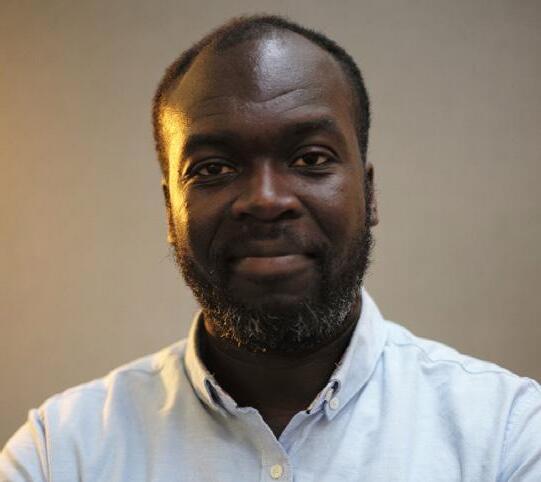

A Study by Dr. Ron Dodzro and Winston Goode, Founder/CEO, Juvenis
Dr. Ron Dodzro, a Clinical and Community Psychologist, has made a significant contribution to the understanding of the psychological and emotional experiences of young Black men involved in gang-affiliated environments through his insightful research project, "The Life of a Top Boy", authored by Dr. Ron Dodzro in collaboration with Juvenis. This is a significant study that delves into the impact of community violence on young Black men in Lambeth. This research is pioneering in its qualitative approach, capturing the lived experiences of young Black men and their interpretations of trauma resulting from such community violence.
Dr. Dodzro, a Clinical and Community Psychologist, brings a personal perspective to this work, having grown up in South London during a time of prevalent gang violence. His intersecting identities and experiences fuel his commitment to advocating for an equitable society and reforming how mental health services engage with marginalized communities.
The study involved interviews with eight young Black men, aged between 19 and 32, all connected through Winston Goode, Founder/CEO and Juvenis - a grassroots organisation in
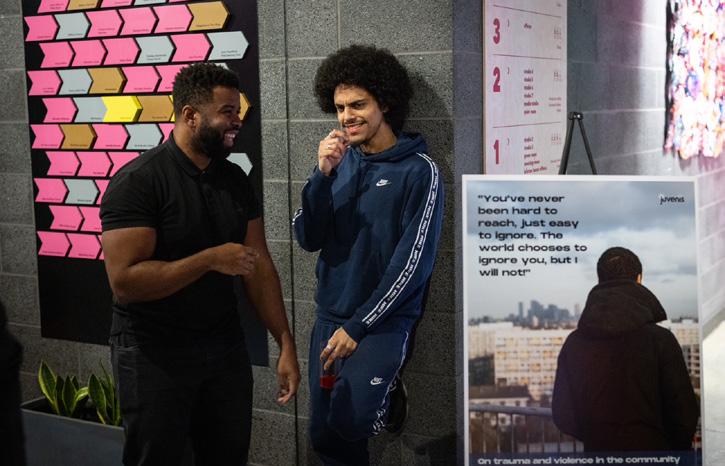
Lambeth dedicated to supporting young Londoners. These narratives shed light on the profound psychological effects of gang-affiliated violence, including trauma responses and coping mechanisms. The research emphasizes the importance of amplifying the voices of those often marginalised, challenging the notion that young Black boys and men are "hard to reach" by demonstrating the value of engaging directly with their experiences.
The term “Top Boy” refers to a hierarchical position within gang culture, often associated with power, control, and influence. However, Dr. Dodzro’s research unveils the hidden layers beneath this perceived authority - a world marked by trauma, systemic injustice, and societal neglect. The study underscores how young Black men are often thrust into these roles due to a complex interplay of socioeconomic factors, familial challenges, and a lack of community support.
One of the central themes of the study is the prevalence of trauma among these individuals. Many young men in gang-affiliated environments have been exposed to community violence from an
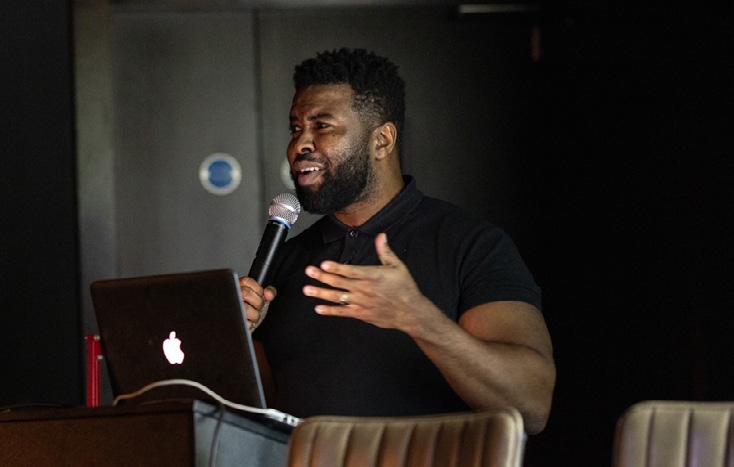
early age, normalizing a reality filled with fear and survival instincts. Dr. Dodzro emphasizes that this normalization of violence has profound effects on mental health, leading to conditions such as anxiety, depression, and post-traumatic stress disorder (PTSD).
The report also indicates that many young Black British men experience suicidal thoughts following such traumatic experiences, underscoring the critical importance of early intervention and culturally sensitive support services.
Unfortunately, societal stereotypes and systemic barriers often prevent these individuals from accessing the mental health support they need. The stigma around mental health within their communities further exacerbates this issue, leaving many to cope with their struggles in isolation.
Dr. Dodzro’s research highlights the systemic injustices that perpetuate the challenges faced by young Black men. From racial profiling to limited economic opportunities, these systemic barriers create a cycle of marginalisation. The study calls attention to how these young men are often viewed through a lens of criminality rather than humanity,
further alienating them from the support systems they desperately need.
A key strength of The Life of a Top Boy lies in its commitment to amplifying the voices of the young men themselves. By sharing their stories, Dr. Dodzro and Juvenis challenge prevailing narratives and stereotypes, humanising individuals who are often reduced to statistics or sensationalized headlines. These stories reveal resilience, aspirations, and a yearning for opportunities that could help them break free from the cycles of violence and poverty.
Dr. Dodzro’s study is not merely an exposé but a call to action. It advocates for:
1. Healing-Centred Interventions: Early identification of trauma and tailored mental health services to address the unique needs of young Black men.
2. Community- Based Support Programs: Initiatives that foster mentorship, education, and skill development to provide alternative pathways to success.
3. Policy Reforms: Addressing systemic issues such as racial profiling and economic disparities to create a more equitable society.
4. Awareness Campaigns: Reducing the stigma surrounding mental health within communities, encouraging more individuals to seek help.
The Life of a Top Boy by Dr. Ron Dodzro and Juvenis is a profound exploration of the intersection of trauma, systemic injustice, and resilience. By shedding light on the lived experiences of young Black men in gang-affiliated environments, the study offers a roadmap for creating a
society that values, supports, and uplifts its most vulnerable members. It serves as both a wake-up call and a beacon of hope, urging stakeholders to take meaningful action to address the root causes of these challenges and build a brighter future for all.
Winston Goode Founder/CEO, Juvenis
Dr. Ron Dodzro
Clinical Psychologist

juvenis.org.uk


https://www.adph.org.uk/networks/london/ resources/the-life-of-a-top-boy-juvenis-research/


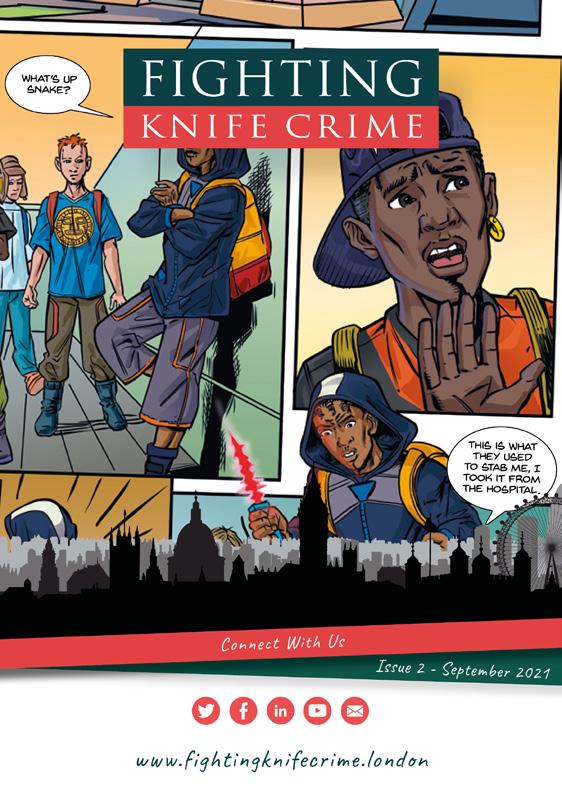


By Nic Madge, Former Circuit Judge, Safer Knives Group
CAs a circuit judge, I presided over numerous jury trials involving serious violence. Many of the victims and defendants in those cases were very young people, twelve yearolds, fourteen year-olds and sixteen year-olds, who were carrying knives. One mother described seeing her son bleeding like a watering can full of holes. Some were injured by knives which they had themselves taken out of fear, but were then used against them. Knife crime is not limited to gang-
related violence or planned attacks - it frequently occurs spontaneously, often involving young teenagers on the streets or during domestic violence incidents in the home.
In the cases I heard, the weapons most frequently used were kitchen knives. They are the knives which come to hand easiest. They are the lethal weapons in every kitchen drawer. It is the simplest thing in the world for a young person, without thinking what will happen, to take out a kitchen knife from his mother’s kitchen drawer,
or indeed his friend’s mother’s kitchen drawer. The same applies to domestic quarrels. A kitchen knife is often the most accessible weapon.
My experience in court is now confirmed by government statistics. They show that in homicide cases where a sharp instrument was identified as the cause of death, kitchen knives accounted for over half the deaths (101 out of 192 deaths). In other words, two people are killed by kitchen knives every single week. In contrast, zombie knives, samurai swords, and Rambo knives account for only 8% of such homicides. Those knives and swords grab the headlines, but it is kitchen knives which are the most frequent killers. They are also a major factor in self-harm and suicide and cause serious accidental injuries.
Research and clinical experience show that it is the points of long knives that penetrate rib cages and sever arteries, causing life-threatening and fatal injuries. Removing the pointed tip of a kitchen knife does not stop it from being used in violence, but it significantly reduces its lethality. The blades of knives can injure and disfigure, but they rarely kill.
So, over the last ten years, a small group with different professional experiences of knife-related injuries, have been calling for a practical, public health based approach to reduce kniferelated harm by phasing out pointed-tip kitchen knives and introducing safer alternatives with rounded ends as the norm. We have done this working both collectively and individually and now call ourselves the Safer Knives Group.
The Labour government has rightly prioritised tackling knife crime, with
measures such as banning ninja swords, zombie-style blades, and machetes, as well as tightening online sales regulations. We support these measures but argue that they do not go far enough. On their own, they will not be enough to meet the government’s ambition of halving knife crime in a decade.
We have engaged with government, law enforcement, manufacturers and retailers. In recent months, we have had meetings with the relevant Home Office minister and with senior civil servants. We have made television and radio appearances and written articles. Our campaign has gained added impetus after comments by Idris Elba which were probably the result of our high-profile letter published in The Times published on January 24 th Policy Recommendations
We advocate a practical, public health based approach to reducing knife-related harm by phasing out pointed-tip kitchen knives as the industry standard and introducing safer alternatives. Rounded knives should become the norm.
Our recommendations are
1. Encourage manufacturers and retailers to replace pointed kitchen knives with rounded-tip alternatives.
• There is little culinary need for pointed-tip knives in home kitchens.
• Rounded-tip knives, such as those in the Viners Assure range, have been shown to perform all necessary kitchen functions while significantly reducing risk.
• Retailers should display rounded-tip knives openly while storing pointed knives securely (as with tobacco sales) to deter impulsive purchases and theft.
• Knives with rounded tips are much less attractive as weapons. Individuals carrying knives for intimidation tend to favour long, pointed blades. A knife without a sharp tip is perceived as less threatening, making it less likely to be chosen as a weapon.
2. Remove restrictions on the sale of safer, rounded knives. Knives with rounded ends should be openly displayed in shops, advertised and sold by email. Manufacturers and retailers should be encouraged to actively promote the sale of different ranges of safer, rounded knives. On the other hand, manufacturers and retailers should end the remote sale of pointed knives to be delivered to residential addresses, ideally voluntarily but, if necessary, by legislation. Individuals who want to buy pointed knives by mail order/via the internet, should be required to collect them instore where age verification is easier. Businesses (butchers, fishmongers, restaurants) operating from commercial premises would still be able to order by internet/mail order.
3. Introduce a pricing differential to discourage the purchase of pointed knives.
• A levy of £10 on pointed knives over a certain length could encourage safer alternatives, just as the 5p plastic bag charge dramatically reduced singleuse plastic consumption.
• This could be implemented through a voluntary retailer/manufacturer initiative or a government-led tax.
4. Launch a knife modification scheme.
• Supermarkets, high-street key cutters, or police could provide a
service to grind down the points of existing knives in exchange for small incentives, such as food vouchers.
• A similar scheme was successfully implemented in the recent knife surrender programme, where individuals were offered £10 to hand in banned knives.
5. Differentiate knife type in crime data collection.
• The latest Home Office homicide statistics now differentiate between different types of knives. This should continue and be expanded to all knife crime reporting to provide a clearer picture of trends.
6. Phase in the use of rounded kitchen knives in shared accommodation settings.
• Approved Premises, supported accommodation, local authority residential settings, student halls of residence, workplace kitchens, and hostels should be encouraged to transition to rounded-tip kitchen knives as part of routine safety measures.
Tough sentencing alone has not been shown to reduce violent crime. Custodial sentences stop offenders engaging in knife crime while they are in young offender institutions or in prison, but they rarely act as deterrents to further offending. Many violent offences are committed on the spur of the moment, without rational thought about the consequences. The key is prevention, not just punishment. A safer default knife design is a low-cost, high-impact measure that complements wider crime reduction strategies.
Our proposals are not about restricting personal freedom, nor are they a magic bullet that will end violence. They are simple, practical steps that can save lives with minimal disruption. Knife crime is a complex and multi-faceted issue—there is no single, simple solution, but the shape of weapons matters. Just as seat belts do not stop all crashes but reduce deaths and injuries, safer kitchen knives will not end knife crime, but they will reduce its lethality. These measures align with the government’s commitment to halving knife crime and reducing preventable deaths.
Making safer kitchen knives the norm, rather than the exception, is a realistic, evidence-based intervention that will save lives without restricting legitimate knife use. The choice should be obvious.
Former Circuit Judge, Safer Knives Group

His Honour Nic Madge – Former circuit judge, who presided over many cases of serious violence involving knives.
Professor John Crichton –Consultant forensic psychiatrist, past chair of the Royal College of Psychiatrists in Scotland, with a longstanding research interest in homicide reduction.
Duncan Bew – Consultant major trauma surgeon at King’s College Hospital, with first-hand experience of treating lifethreatening injuries caused by knives.
Leisa Nichols-Drew – Chartered forensic practitioner and Associate Professor of Forensic Biology at De Montfort University, specialising in the forensic investigation of kniferelated injuries.
Andy Slaughter MP – Chair of the Justice Select Committee, a long-time advocate for legislative reform to reduce knife crime.

Sorrel Nation flexes her vocal repertoire on a debut album rich in breakout qualities Traces of pop, rock and folk meld into an enticing body of work. Sorrel Nation is a name to remember for many reasons. Most notably a wonderful album -threechordsandthetruthuk.blogspot.com
Sorrel has one of the most beautiful voices I’ve heard in a long time - it’s so yearning and full of emotion"
Steve Balsamo – Singer/Songwriter


